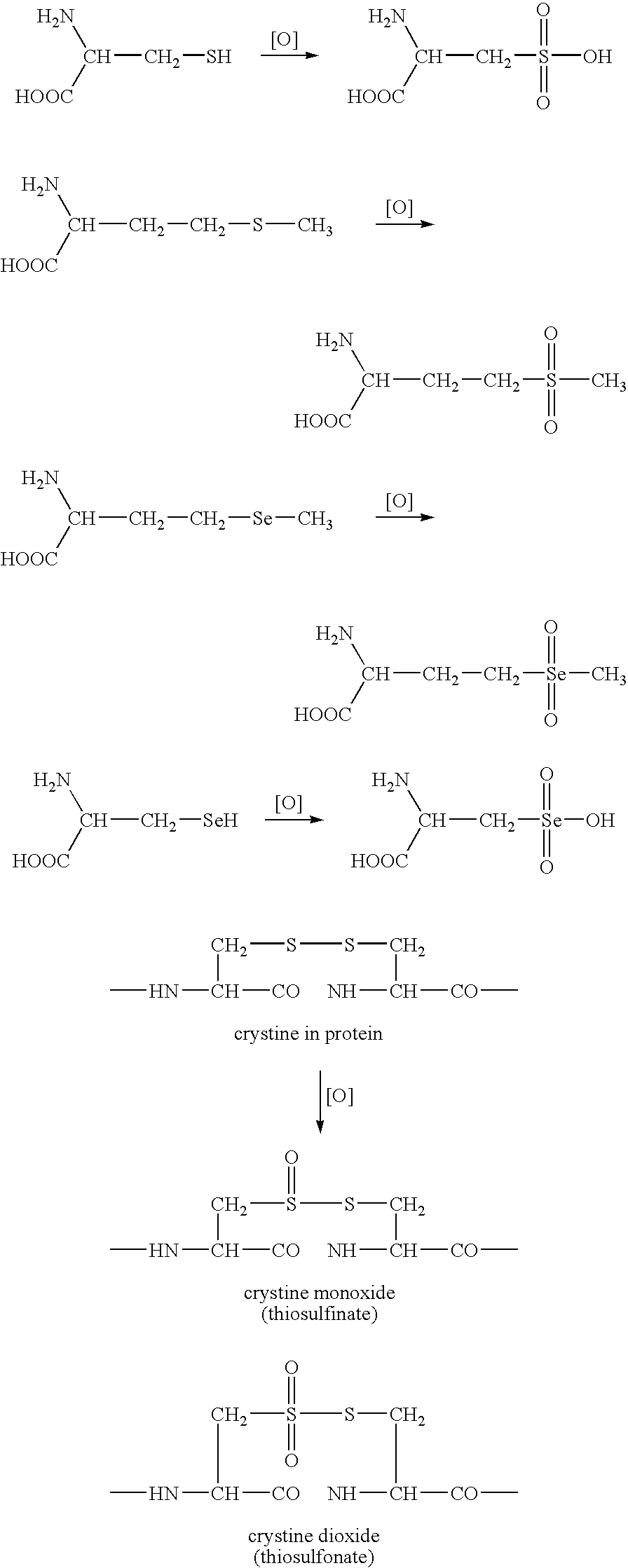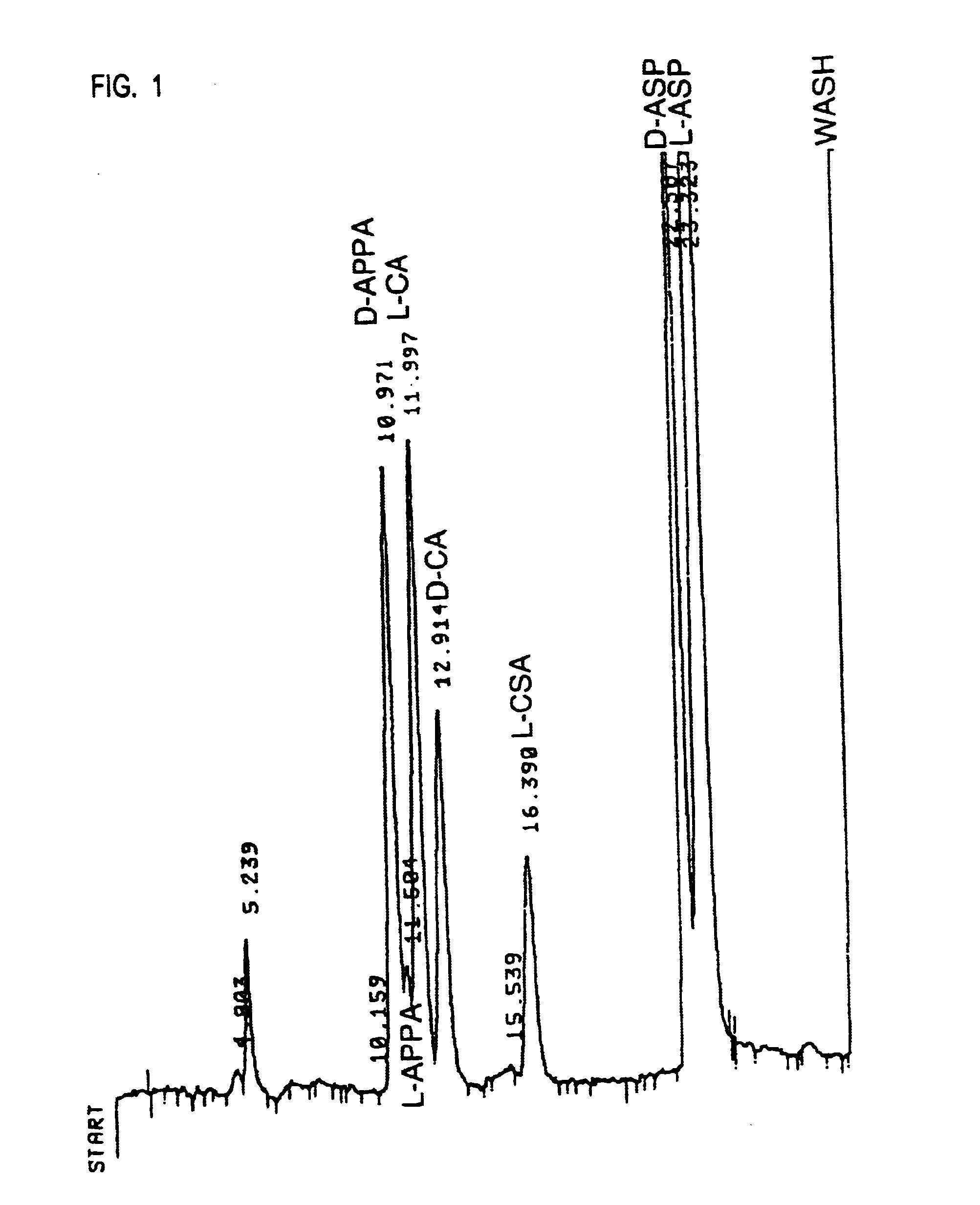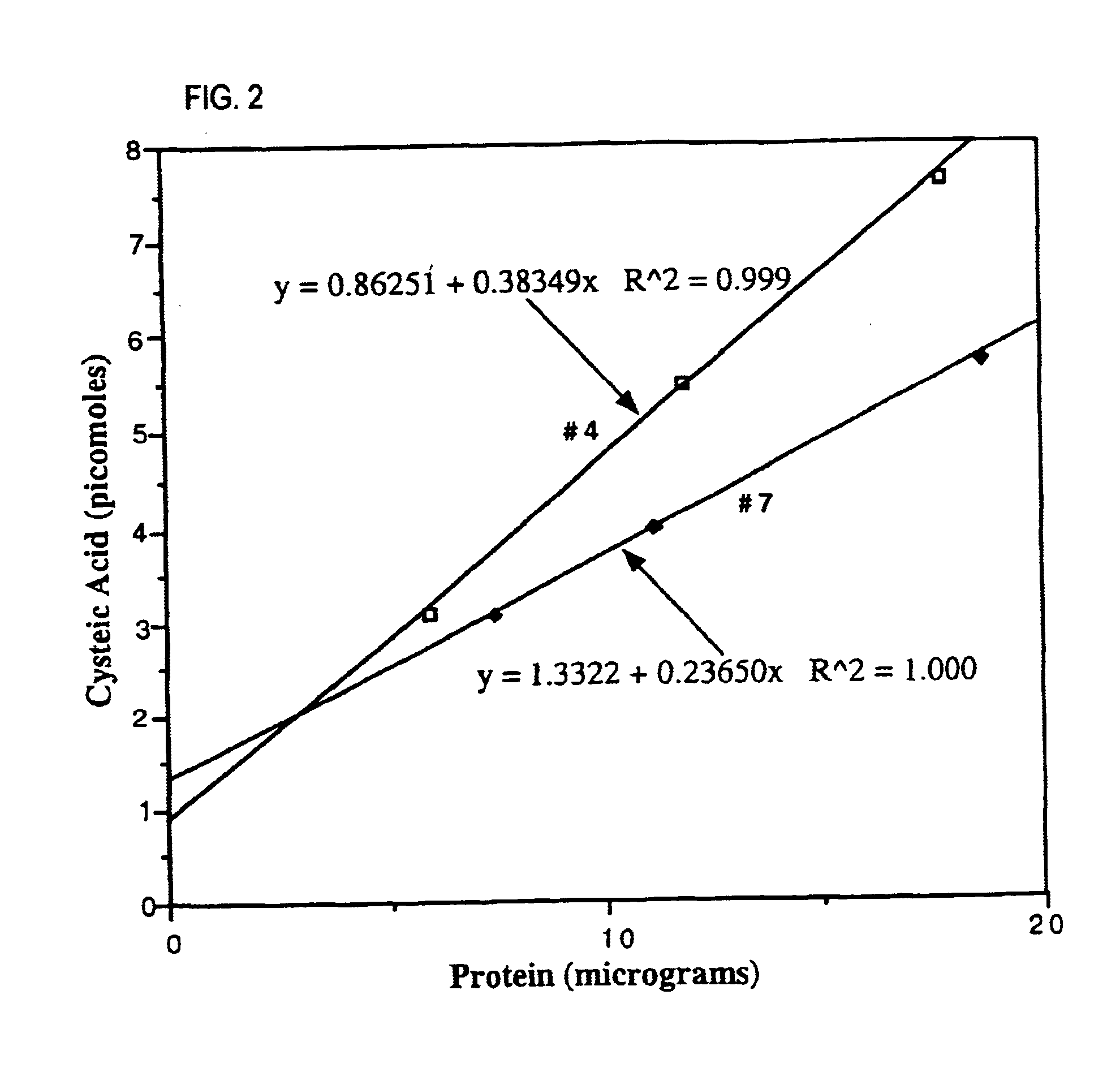Biomarkers for oxidative stress
a biomarker and oxidative stress technology, applied in the field of oxidative stress biomarkers, can solve the problems of insufficient methodology, unstable selenocysteic acid, and particularly susceptible sulfur moieties in amino acid residues of proteins, and achieve the effect of easy assay
- Summary
- Abstract
- Description
- Claims
- Application Information
AI Technical Summary
Benefits of technology
Problems solved by technology
Method used
Image
Examples
example 1
Chemical Method for Detecting Cysteic Acid in Protein
[0117]In general, a strong, nonoxidizing acid is mixed with the sample protein of interest to promote hydrolysis of the peptide bonds. Methanesulfonic acid (MSA) is one example of a strong, nonoxidizing acid. Some commercial providers of methanesulfonic acid distribute methanesulfonic acid with 3-(2-aminoethyl)indole (about 0.2% v / v) added to it. 3-(2-aminoethyl)indole hinders oxidation of amino acid residues, particularly tryptophan; therefore, inclusion in the acid of 3-(2-aminoethyl)indole or another reagent which provides the same function is preferable. A strong reductant, e.g., dithiothreitol, is added to the acidified protein sample to further prevent oxidation of amino acid residues. The container holding the protein mixture, preferably a glass hydrolysis tube, is then sealed under vacuum at room temperature. The container is evacuated to remove oxygen, to further prevent oxidation of amino acid residues. Following hydroly...
example 2
Quantification of Cysteic Acid in Naturally Occurring Proteins
[0121]A number of naturally occurring cysteine and / or cystine-containing proteins were analyzed using the chemical method described in Example 1: bovine serum albumin (BSA); chicken ovalbumin (Oval); bovine spleen cathepsin B (Cat B); human myelin basic protein (MBP); chicken egg white lysozyme (LZ); and bovine pancreatic ribonuclease A (RNase). As a positive control, CatB was analyzed because a cysteic acid-containing peptide (active-site Cys-29) has been isolated from this protein (Pohl, J. et al. (1982), “Identification of the active site cysteine and of the disulfide bonds in the N-terminal part of the molecular of bovine spleen cathepsin B,” FEBS Lett. 142:23-26), and the content of cysteic acid (based on yield of peptide) was estimated to be 5% of the Cys-29 residue. As a negative control, analyzed human MBP which contains no cysteine / cystine was analyzed. The results of these analyses are shown in Table 1. The find...
example 3
Quantification of Cysteic Acid in HOCl-Oxidized Proteins
[0123]Oxidation Using Reagent HOCl. Proteins were subjected to in vitro HOCl oxidation under conditions consistent with those occurring at in vivo sites of inflammation: molar ratio of HOCl:Protein=800:1 (Hazell, L. J. and Stocker, R. (1993), “Oxidation of low-density lipoprotein with hypochlorite causes transfonnation of the lipoprotein into a high-uptake form for macrophages,” Biochem. J. 290:165-172). The reaction was stopped by quenching with a 100-25 fold molar excess of methionine and allowed to remain at room temperature for 1-2 h to ensure that no protein-associated chloramines remained (Hazell, L. J. et al. (1994), “Oxidation of low-density lipoprotein by hypochlorite causes aggregation that is mediated by modification of lysine residues rather than lipid oxidation,” Biochem. J. 302:297-304). The samples were dialyzed to remove any small molecular weight oxidants, and reassayed for protein, since it is known that such ...
PUM
| Property | Measurement | Unit |
|---|---|---|
| Dimensionless property | aaaaa | aaaaa |
| Dimensionless property | aaaaa | aaaaa |
| Dimensionless property | aaaaa | aaaaa |
Abstract
Description
Claims
Application Information
 Login to View More
Login to View More - R&D
- Intellectual Property
- Life Sciences
- Materials
- Tech Scout
- Unparalleled Data Quality
- Higher Quality Content
- 60% Fewer Hallucinations
Browse by: Latest US Patents, China's latest patents, Technical Efficacy Thesaurus, Application Domain, Technology Topic, Popular Technical Reports.
© 2025 PatSnap. All rights reserved.Legal|Privacy policy|Modern Slavery Act Transparency Statement|Sitemap|About US| Contact US: help@patsnap.com



